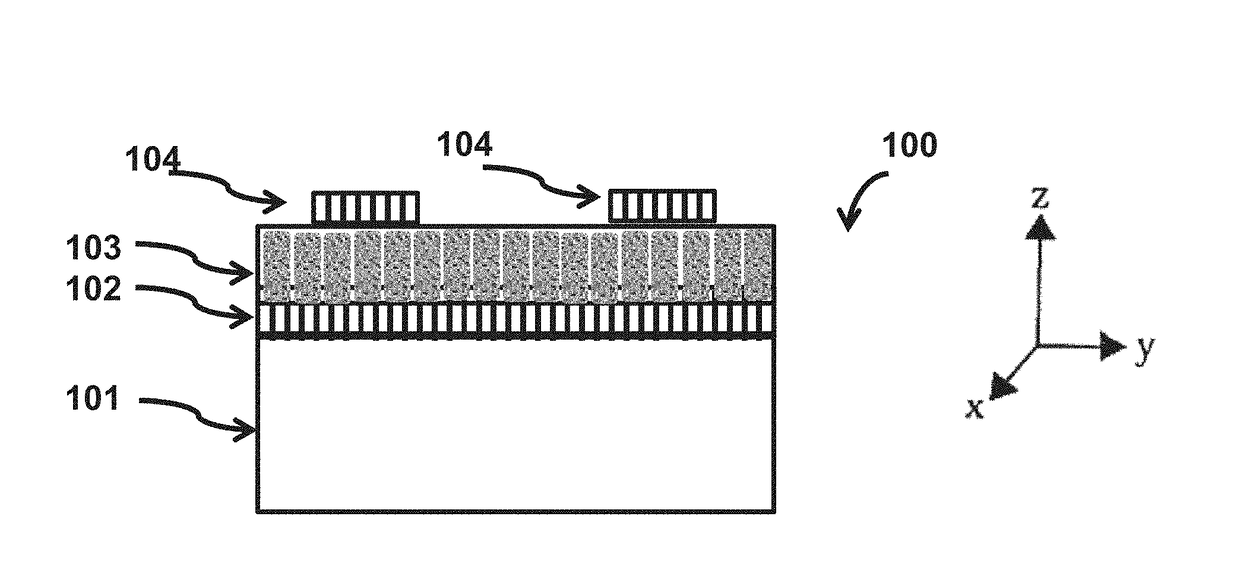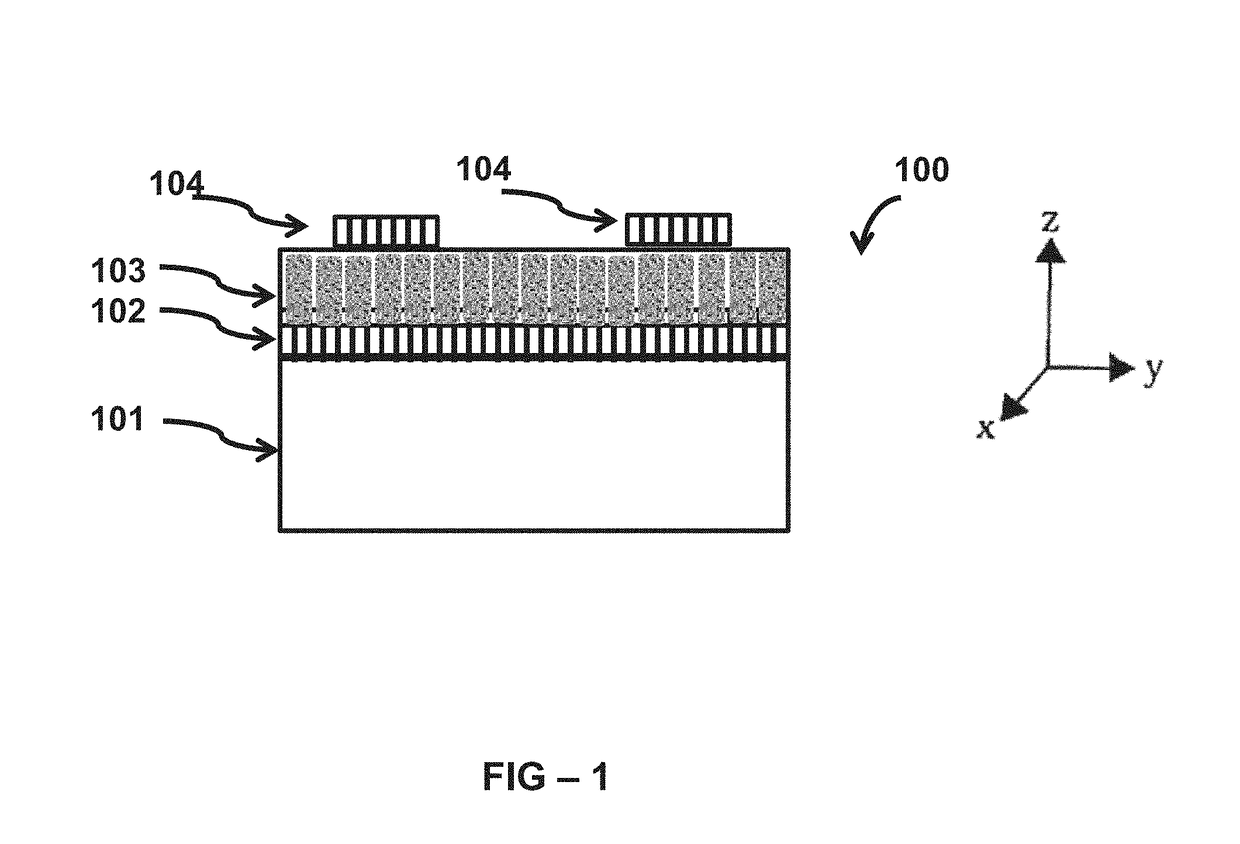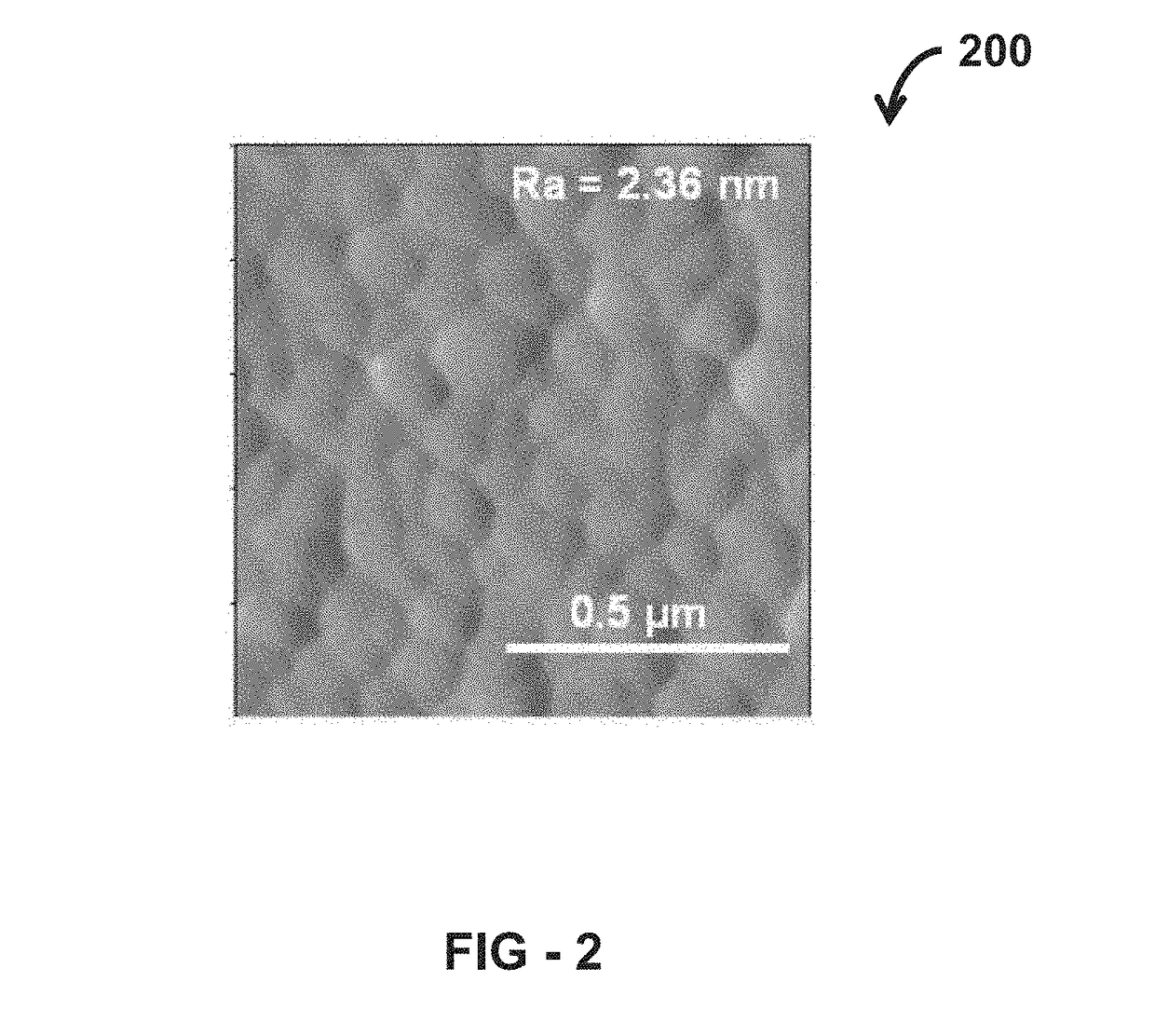Microstructural architecture to enable strain relieved non-linear complex oxide thin films
a thin film, non-linear technology, applied in the direction of capacitors, semiconductor devices, semiconductor/solid-state device details, etc., can solve the problems of film strain, increase lattice parameter and unit cell volume, and introduce film strain, so as to reduce thermal strain, reduce lattice parameter and unit cell volume, and reduce lattice volume
- Summary
- Abstract
- Description
- Claims
- Application Information
AI Technical Summary
Benefits of technology
Problems solved by technology
Method used
Image
Examples
Embodiment Construction
[0038]The present invention will now be described more fully with reference to the accompanying drawings, in which exemplary embodiments of the invention are shown. In the drawings, the thicknesses of layers and regions are exaggerated for clarity.
[0039]An integrated NLCO thin film heterostructure with a tailored microstructure architecture design and a method of fabrication thereof, inclusive, is provided. The tailored microstructure architecture design mitigates the undesirable effects of thermal strain, hence provides strain relief, which enables the desirable simultaneous achievement of a high permittivity and high dielectric Q / low dielectric loss in concert with one another. The high dielectric permittivity promotes device miniaturization and wide tunability, while the low loss serves to minimize signal attenuation, reduce device operational power and increases operational range. The material design and fabrication method thereof; enables enhanced performance, low cost NLCO-bas...
PUM
| Property | Measurement | Unit |
|---|---|---|
| temperature | aaaaa | aaaaa |
| temperature | aaaaa | aaaaa |
| temperature | aaaaa | aaaaa |
Abstract
Description
Claims
Application Information
 Login to View More
Login to View More - R&D
- Intellectual Property
- Life Sciences
- Materials
- Tech Scout
- Unparalleled Data Quality
- Higher Quality Content
- 60% Fewer Hallucinations
Browse by: Latest US Patents, China's latest patents, Technical Efficacy Thesaurus, Application Domain, Technology Topic, Popular Technical Reports.
© 2025 PatSnap. All rights reserved.Legal|Privacy policy|Modern Slavery Act Transparency Statement|Sitemap|About US| Contact US: help@patsnap.com



